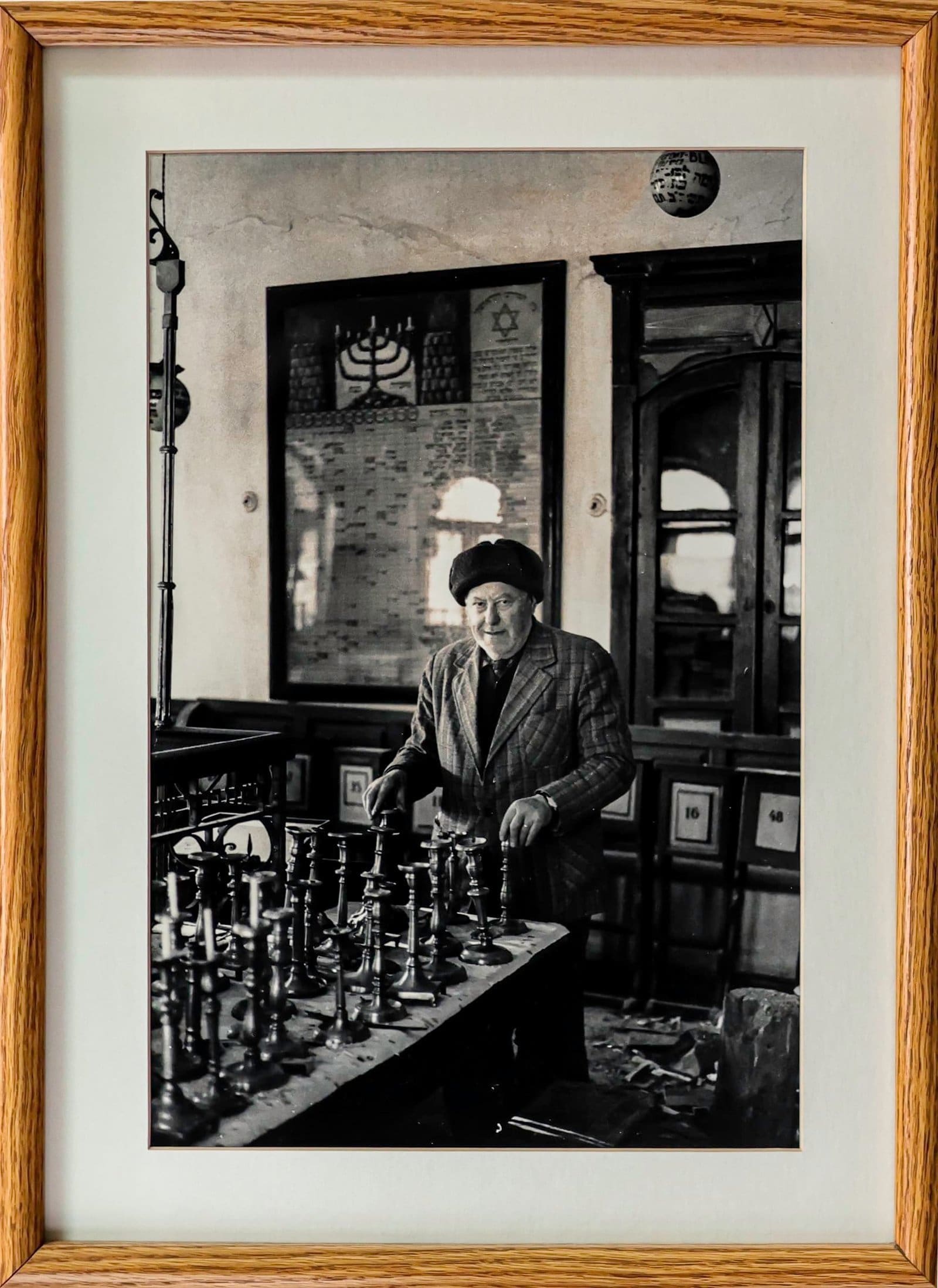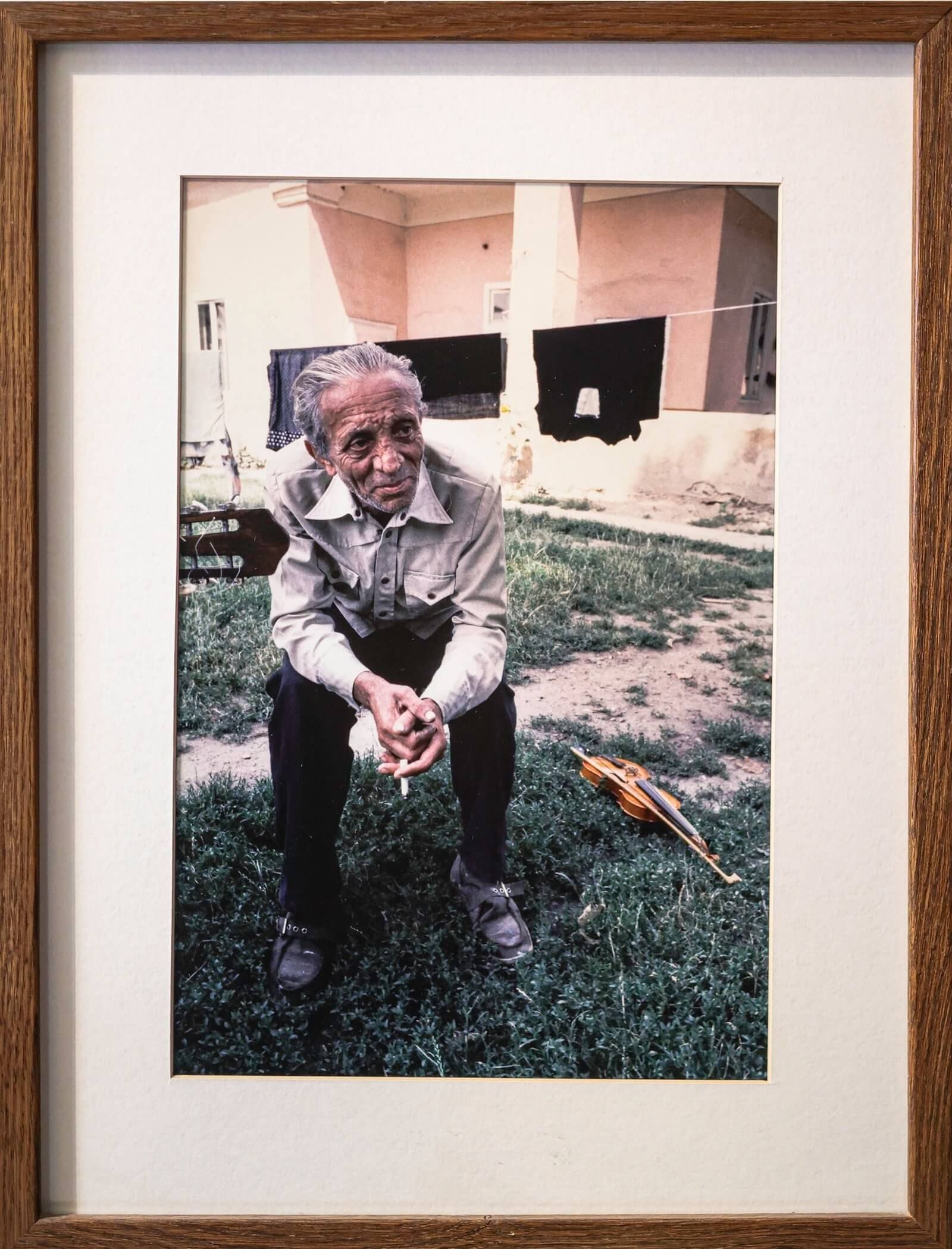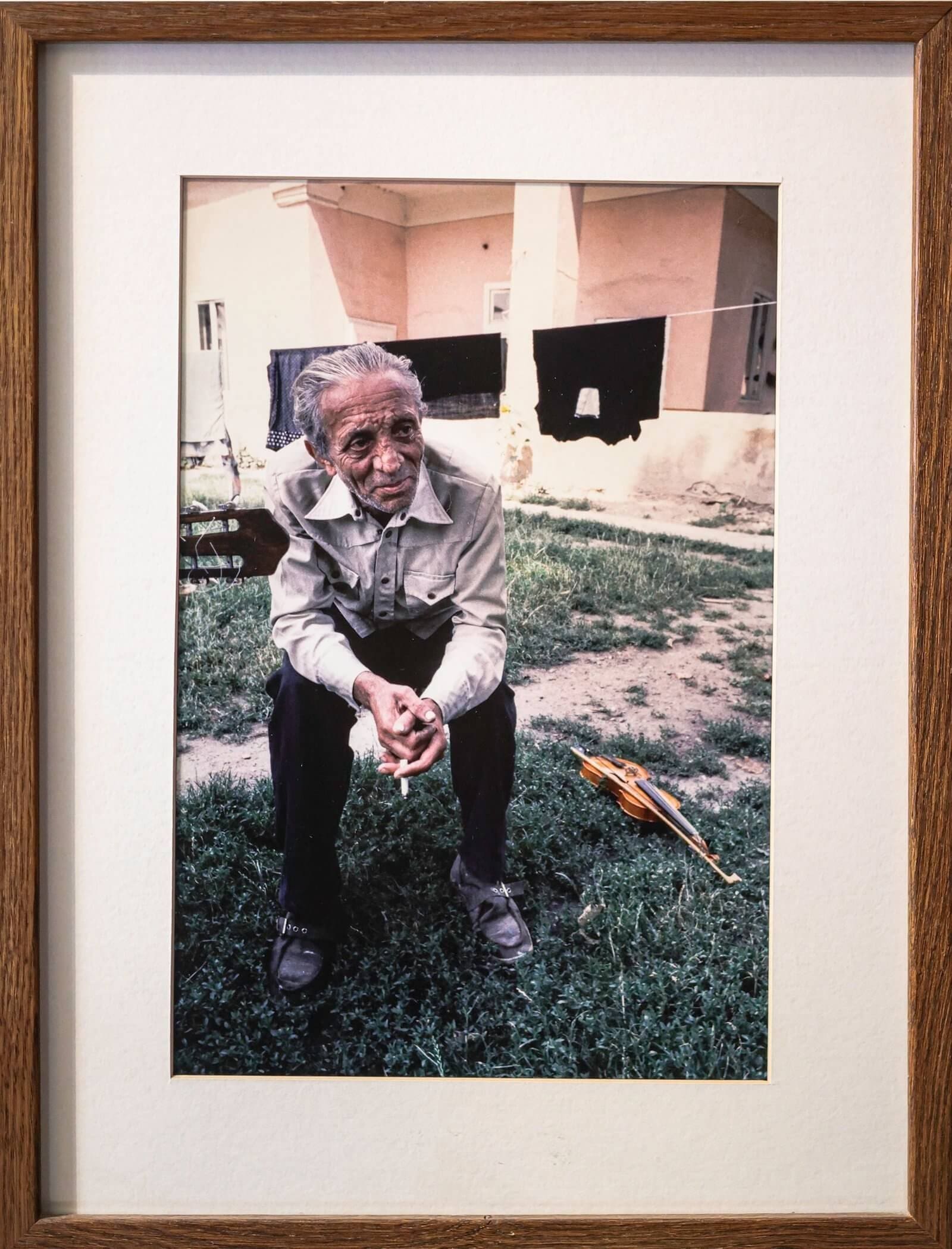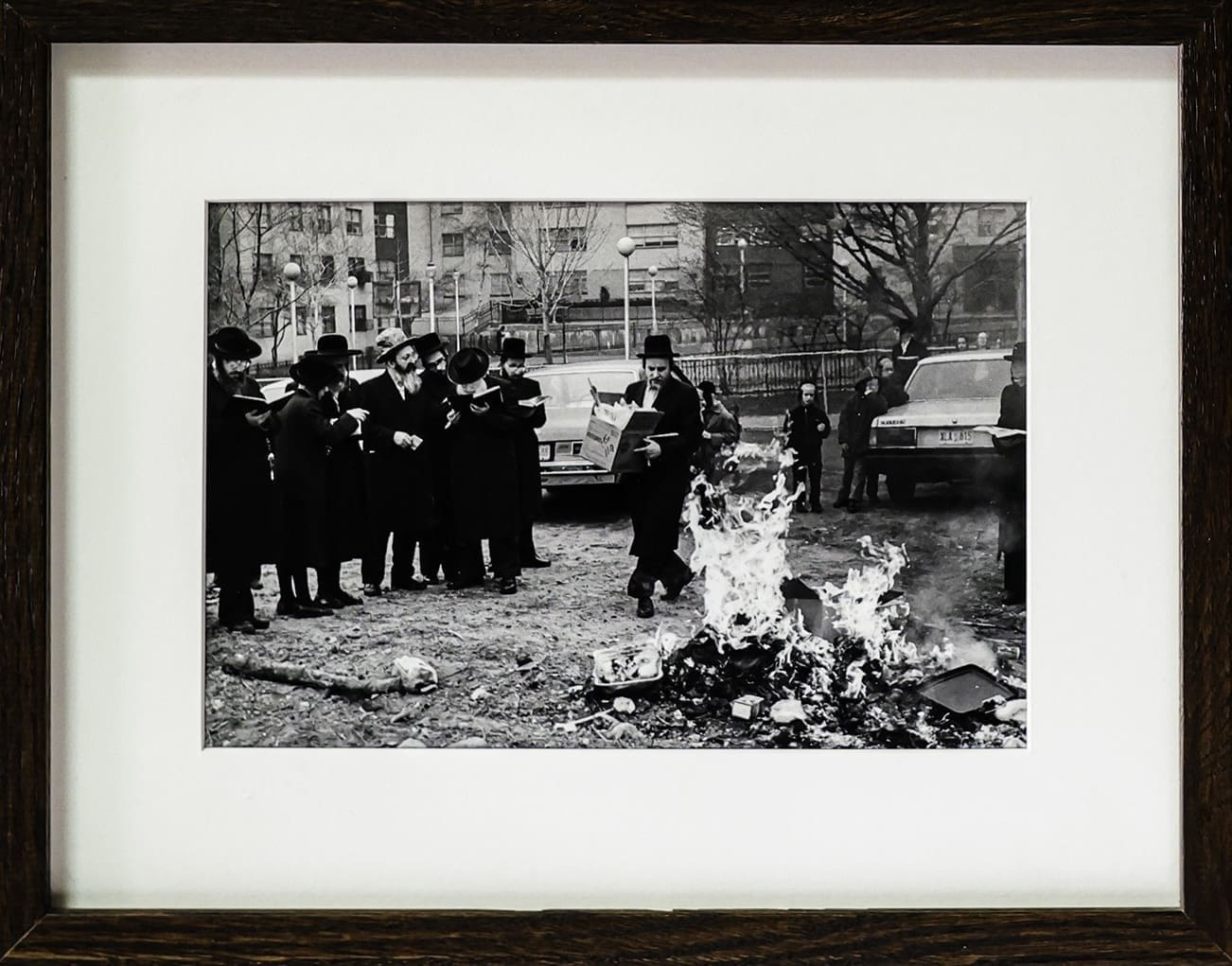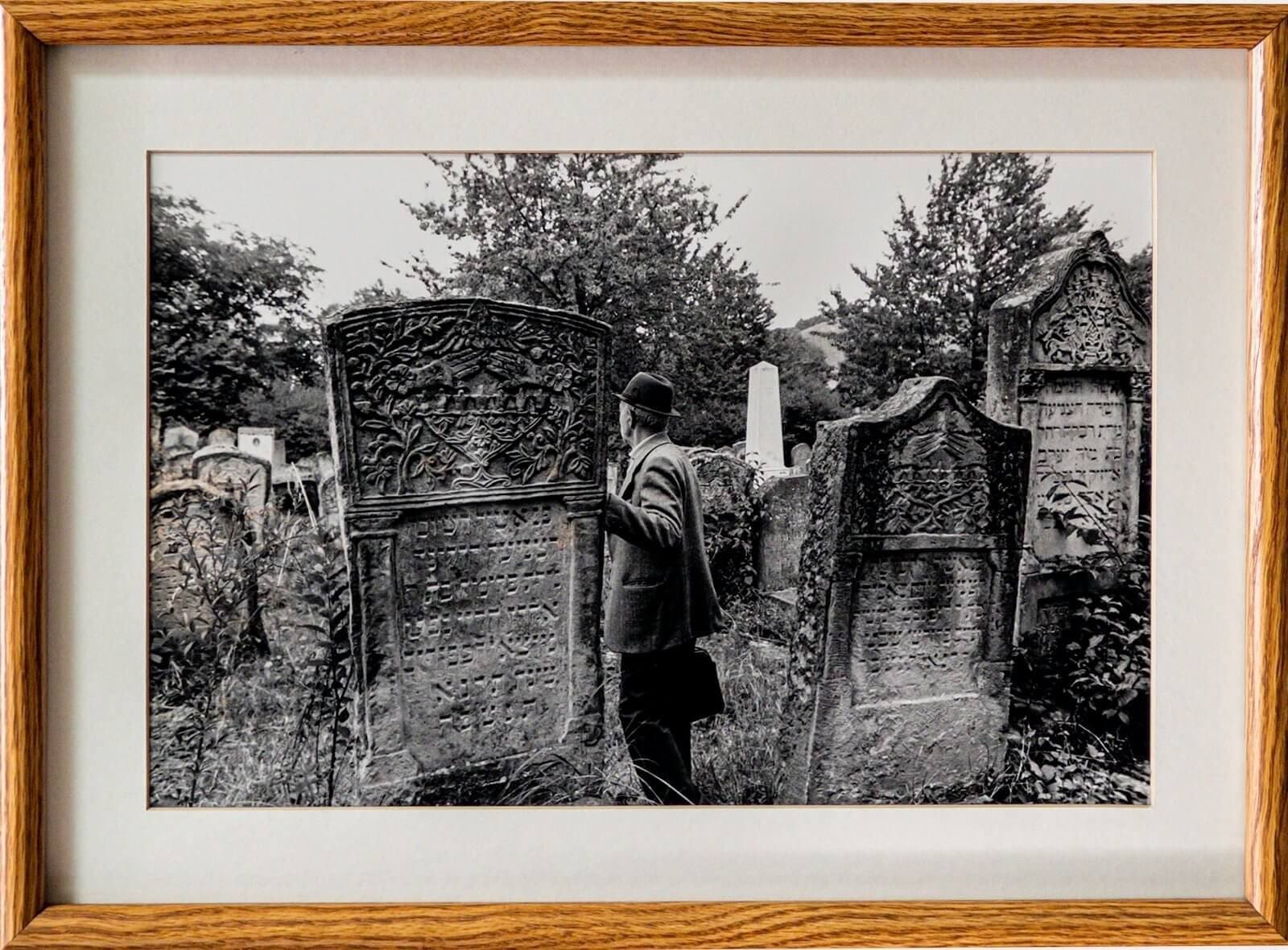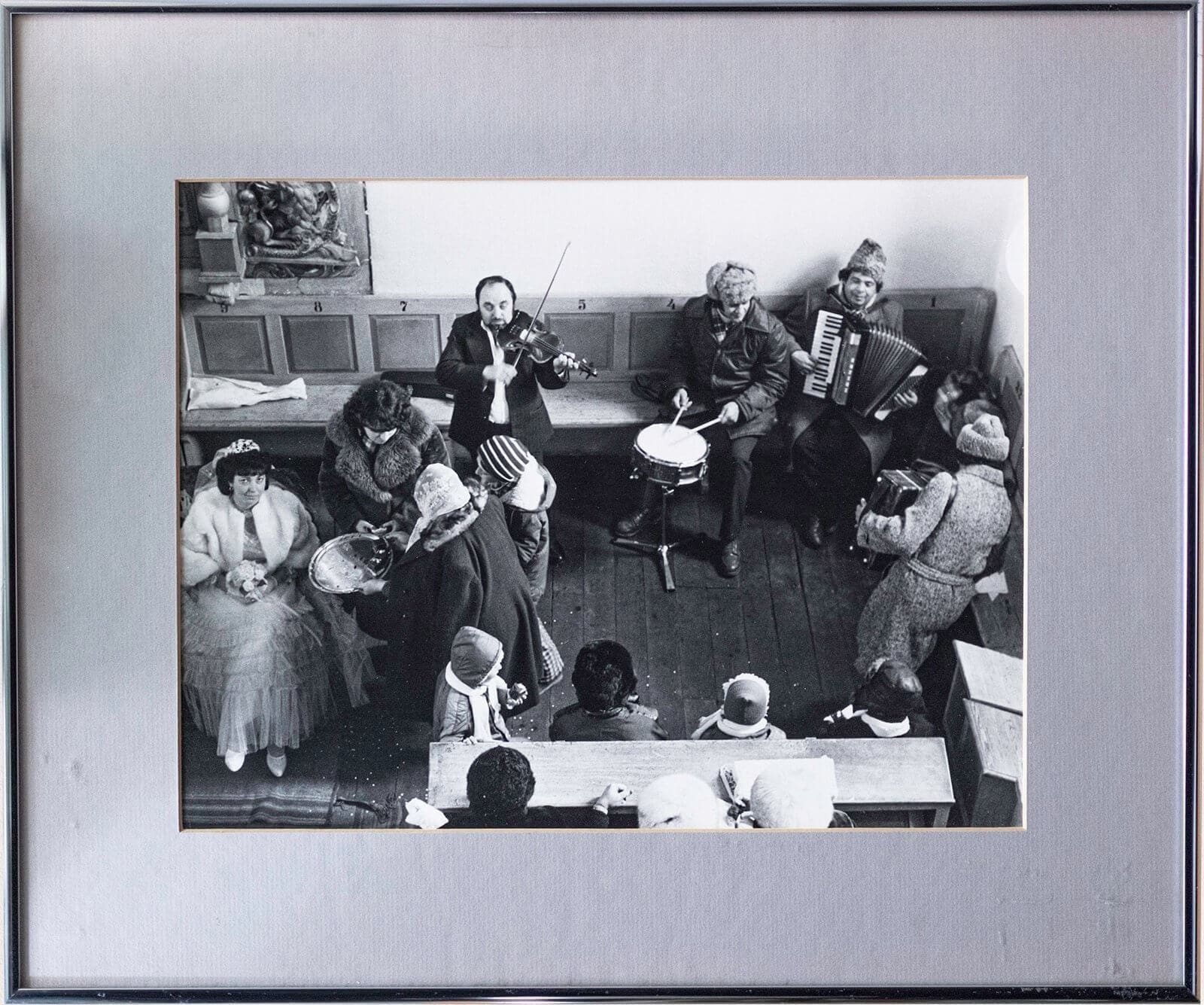Yale Strom
Born in Detroit, 1957
Yale Strom has established a distinguished career as an ethnographer-artist, documenting his extensive research through nine documentary films, twelve books, and numerous global photo exhibitions.
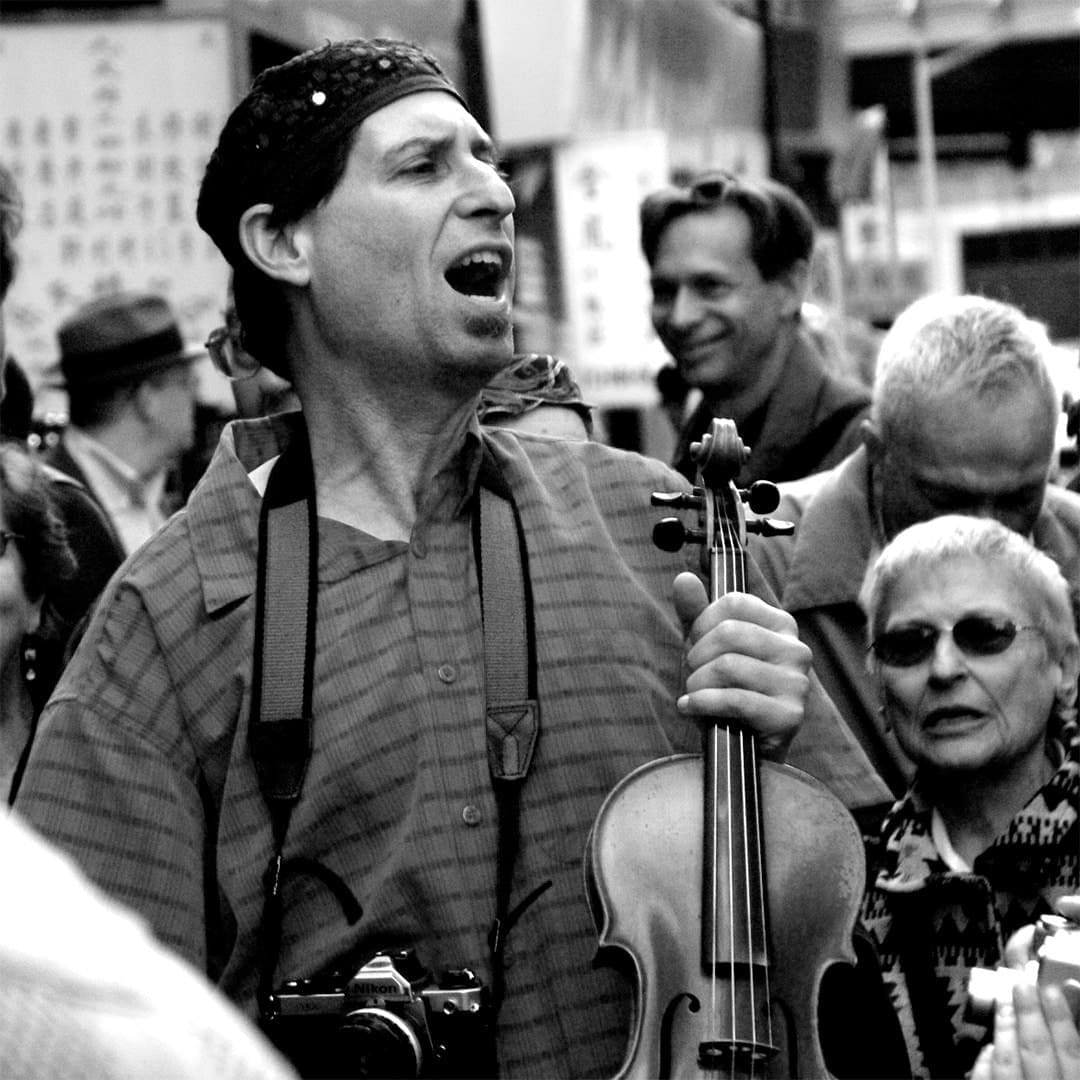
Featured Art
The prices presented below do not include shipping costs.
Yiddishland is in a process of setting up in a new location!
If you are interested in purchasing, please email us at
info@yiddishland.ca
The Shames/Sexton with Candlesticks
Print
Framed 12” x 17”
Price: $500
Romani Violinist
Print
Framed 13.5” x 17.5”
Price: $500
Reciting the Tashlekh Rosh Hashone Ritual
Print
Framed 15” x 18”
Price: $500
The Burning of Khomets
Print
Framed 11” x 14”
Price: $250
Man Visiting Cemetery
Print
Framed 16.5” x 12.5”
Price: $500
Jewish Wedding with Romani Musicians
Print
Framed 18.5” x 15.5”
Price: $500
Custom-shipping available for destinations outside the US. Please fill the form to get a personalized quote.
Please see the rest of our Virtual Gallery
Yale Strom
Yale Strom, a multi-talented American artist and musician, stands out as a klezmer revivalist. His pioneering work includes extensive field research in Central and Eastern Europe and the Balkans, focusing on the Jewish and Romani communities. Strom’s career as an ethnographer-artist is marked by his documentation of this research through nine documentary films, twelve books, and numerous global photo exhibitions.
Yale Strom’s photos are known worldwide. He discovered his photography talent during his ethnographic trip to Eastern Europe to study Jewish culture. “I initially started because I went to Eastern Europe and was interested in Jewish folk music, specifically Klezmer. When I was meeting people who kept telling me stories, singing me a song, or playing music or instruments, I took pictures of them. But then, as time went on, I realized not just the stories about the music but their life. If they were Jewish, they had survived the holocaust, or they were children of survivors. Why did they come back to Poland? Why did they come back to the Soviet Union or Romania, etc? What was life like? I decided I wanted to record not only their voices but also the pictures of their life, their faces, the building where they bought food, the street, Jewish buildings, not Jewish buildings, and the countryside.”
Yale Strom is eager to capture the everyday life of Jewish people. He takes photos of special moments from everyday life that we often overlook. “There are several pictures that are meaningful to me. I was in the city in Romania. We were told that there was going to be a Jewish wedding. Unbelievable! We have been seeing only many funerals. We got invited, and we got there very early in the morning. It was in the wintertime. It was very cold. We went to the synagogue. We went to the top, where the women’s wing was. I looked down and saw the bride in her dress, and she was surrounded by people, little kids. They were not yet married. She was slowly getting prepared. Also, the musicians, the Romans, played Jewish music. She looked at me and gave me a little smile, and I took a photo. It just captured something that could have been a hundred years ago. It was a very meaningful photo in my head.”
Yale Strom draws his main inspiration from Jewish culture. He is deeply moved by its resilience and unwavering commitment to preserving its heritage, and he aims to reflect this in his art. “My photos give people a window to peek at what life was like for that generation of survivors, their children, and grandchildren and to see the world’s resilience and strengths.”, he explains. Jewish religion, culture, and traditions have not only influenced but also formed the foundation of the creative practices of many renowned artists worldwide. “Jewish people, we are the people of the book. The book means the Torah, The Holy Book. So we have words. These words create stories. The stories create images in your mind. When you listen to the story, you create the movie in your head, and then you want to express yourself, so you take a piece of paper and pencil and draw a picture of Samson, Moses, Isaac, or other people from the stories. Maybe you paint them, write a song for them, or write a small concerto expressing your feelings. For many thousands of years, we have had the Torah, which is very expressive. Jews were dispersed all over the world, and now we have the rabbi. Interestingly, we do not have a Pope, which is good in a sense because different rabbis can have different interpretations. It means that we can be creative and see many sides of the same coin. We welcome different points of view, ideas, and opinions, which means we welcome imagination.”
Yale Strom uses a film camera for his photos and plans to stay true to that. “The thing about digital is that it is cheap in a way. You can shoot 500 pictures and hope some are really good. But there is something about film; give yourself a moment to focus. You have to wait for the moment and grab it; I usually use natural light. Because I was doing more photojournalism, it has to be what it is. If it is a dark room, I will open the lenses as wide as it can go and be steady, hoping I get something of it.”
Looking ahead, Strom plans to continue his ethnographic and artistic practice. “I received a call from the POLIN Museum of the History of Polish Jews and hope to exhibit my work there. I aim to conduct more research in Romania, the Carpathian Ukraine, and Slovakia, visiting towns with few remaining Jews and meeting the Roma people who play music with them. I also want to exhibit previously unseen work and conduct further photo research.”
Daria Maksymenko
Art Gallery Assistant Intern

